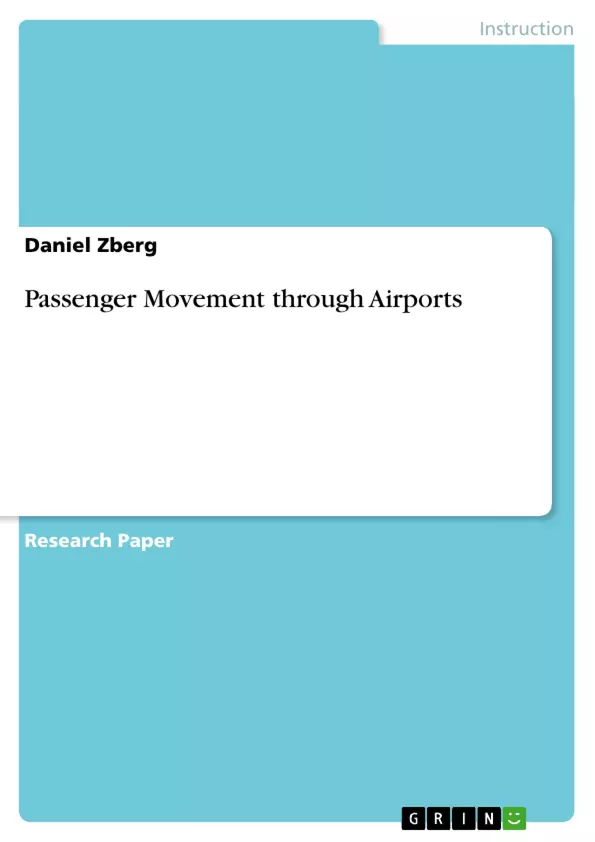Examine some of the fundamental aspects of passenger movement through airports. The paper illustrates basic passenger needs that every airport planner must know.
There are many considerations to be made when planning large passenger movements through an airport. More passengers are saturating airports, and each passenger has an individual need or requirement. It is therefore the difficult responsibility of the airport to be able to accommodate the many passengers to make sure their departure, arrival, and connections go as smoothly as possible. Methods to ease the passenger transfer experience span from the very beginnings of airport construction and continue to evolve with facility expansions and technology improvements. The location and function of different facilities combined with several ground access aids serve as the foundation of managing passenger traffic quickly and effectively.
Inhaltsverzeichnis (Table of Contents)
- Passenger Movement Through Airports
- Airport Planning and Efficiency
- Key Facilities
- Security Checkpoints
- Transferring Passengers
- Baggage Claim
- Ground Access
- Passenger Information and Technology
- Signage and Language Accessibility
- Smart Airports and Digital Grids
Zielsetzung und Themenschwerpunkte (Objectives and Key Themes)
This paper examines the factors involved in efficient passenger movement through airports. The primary objective is to analyze how airports can optimize their operations to facilitate a smooth and enjoyable passenger experience while ensuring security and profitability.- Airport Planning and Design
- Passenger Flow Management
- Security and Safety Considerations
- Technology Integration and Innovation
- The Importance of Customer Service
Zusammenfassung der Kapitel (Chapter Summaries)
This paper begins by outlining the challenges posed by increasing passenger numbers and the need for efficient airport operations. It emphasizes the importance of profitability and customer satisfaction, illustrating the consequences of poor airport planning. The first chapter then delves into the design of essential airport facilities, discussing the importance of accommodating various modes of transport, parking options, and efficient check-in processes. The second chapter explores security checkpoints, emphasizing the need for a balanced approach between security and passenger flow, highlighting the benefits of centralized checkpoints and their strategic placement. The third chapter focuses on transferring passengers, highlighting the need for efficient shuttle services, terminal design considerations, and the potential risks of delays and deportations. Finally, the paper discusses the importance of clear signage and updated information for passenger navigation, highlighting the importance of language accessibility and the potential for technology-driven solutions like "Smart Airports" to enhance passenger experience and provide personalized services.Schlüsselwörter (Keywords)
This paper explores the intricate relationship between efficient passenger movement, airport design, security, technology, and customer service. Key concepts include airport planning, passenger flow management, security checkpoints, transferring passengers, signage, language accessibility, and "Smart Airports."- Arbeit zitieren
- Daniel Zberg (Autor:in), 2012, Passenger Movement through Airports, München, GRIN Verlag, https://www.hausarbeiten.de/document/210922


